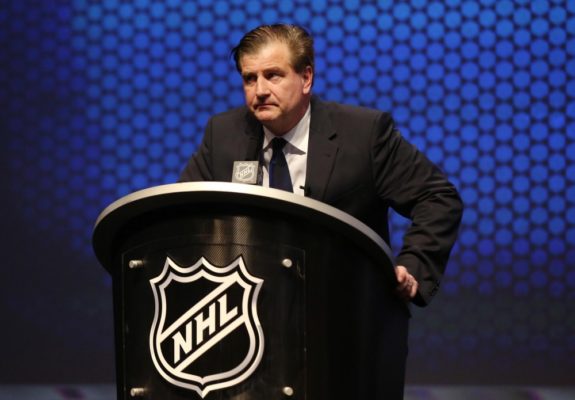![]()
The 2019 NHL Trade Deadline is around the corner, meaning team general managers will be busy over the next few days. Historically, GMs at this time of the season struggle to decide what strategy they will follow. The media has decided that GMs will be either “buyers” or “sellers” at the deadline, with the assigned label based on the league standings at the time, and the probability of their team making the playoffs.
Being a potential playoff-bound team usually results in GMs not willing to “sell” a player, for fear of a drop in short-term overall team performance, versus the opportunity of trading aging players to acquire valuable draft picks or unproven prospects to improve their overall talent pool. On the “buy” side, GMs look at a potential acquisition as a possible ticket to a playoff berth that could have a considerable effect on the financial results of a franchise in the current season.
Competitive Balance Effect
In a 2017 interview with Vancouver Canucks GM Jim Benning before the March 1 trade deadline, he was quoted as saying “Well, the problem is there’s not a lot of teams selling right now. There are so many teams still in the hunt. Teams want to wait right until the deadline to decide whether they are buyers or sellers.”
What Benning was saying is that the competitive balance amongst NHL teams has never been closer than we have seen in recent seasons. Currently, eight points (63-71) separate five teams in the Eastern Conference for the two wild card spots, while only six points (57-63) separate seven teams in the Western Conference race.

Failure to Act at the Deadline
Another motivation for “selling” assets at the deadline is the specter of free agency following the playoffs. Organizations that fear losing valuable unrestricted free agents and potentially receiving nothing in return may be inclined to move a player at the deadline to a team destined for a long playoff run that views the acquisition as a likely short-term “rental” player. Ask Benning.
At the 2016 Trade Deadline, the Canucks put Dan Hamhuis and Radim Vrbata on the market as trade bait but failed to move either of them. According to NHL.com, “Poised to sell at the NHL Trade Deadline for the first time in more than a decade, the Canucks were unable to get anything they liked in return for defenseman Dan Hamhuis or right wing Radim Vrbata, who each can become an unrestricted free agent July 1.” “It wasn’t from a lack of trying,” Benning said. “We really didn’t get a lot of offers. If we got a concrete offer where we could recoup assets and draft picks, or young players, we would have done it.”

Pittsburgh Penguins’ Savvy Acquisitions
On the other hand, an excellent example of a prudent trade deadline deal for the Pittsburgh Penguins was the acquisition of Justin Shultz who was traded from the Edmonton Oilers to the Pittsburgh in 2016 for a third-round pick. Surprisingly, the Oilers agreed to carry 50 percent of Schultz’s salary as part of the agreement.
Schultz was buried in Edmonton and accused of falling well short of the Oilers’ expectations. Since then he has recorded 92 regular season points in 166 games and has played 48 playoff games while anchoring the Penguins’ power play, with 25 points on the man advantage. Most importantly, he has two Stanley Cup rings to show for his performance. It was obvious the change of scenery was healthy for his career.

During the 2017 Trade Deadline, Pittsburgh picked up veteran defenceman Ron Hainsey from the Carolina Hurricanes for the playoffs in exchange for Danny Kristo and a 2017 second-round pick. Hainsey ended up being a top-four defenceman for the Penguins, facing the opposition’s top offensive forwards in a “shutdown” role. After more than 900 regular-season games, and no playoff experience in the NHL, he played 25 total games in the 2017 Playoffs and won a Stanley Cup with Pittsburgh. He was signed as an unrestricted free agent by the Toronto Maple Leafs on July 1, 2017.

“Buyers” “Sellers” or “Traders”?
There are no exclusive “buyers” or “sellers” at the trade deadline. While GMs who are looking to bolster their lineup for the playoffs are traditionally labeled “buyers” by the media, they could also be designated as “sellers” given the fact that they are usually “selling” draft picks and prospects in return for proven talent.
The media should consider all GM participants as “traders” as the transactions involve the exchange of talent between two parties. One might even suggest that the transaction is a “contra deal”: I will give you this (player or draft pick) if you give me that (player or draft pick). Both parties fulfill the role of a “seller” and a “buyer” of player assets in every transaction. A reminder that Jimmy Rutherford, GM of the Penguins, had to “sell” players and draft picks to “buy” Schultz and Hainsey to help Pittsburgh win two successive Stanley Cups in 2016 and 2017.